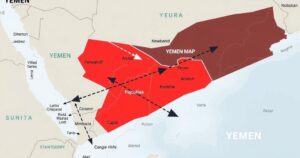Concerns Over US Troop Withdrawal Plans Amidst Shifting Dynamics in Syria

The Kurdish-led Syrian Democratic Forces (SDF) state they have not been notified of US withdrawal plans. Speculation increased as the Trump administration considers troop removal following the ousting of Syrian President Bashar al-Assad. Tensions also rise with Turkish interactions regarding Kurdish autonomy and ISIL threats. The future of US forces remains uncertain amid these shifts in the region.
The Kurdish-led Syrian Democratic Forces (SDF) have stated that they have not received any notifications regarding US plans to withdraw its troops from Syria. This remark was made by SDF spokesman Farhad Shami shortly after reports surfaced in the US media regarding such withdrawal plans. The SDF, which controls a significant segment of northeastern Syria, has been a crucial ally of the US-led coalition in the fight against the Islamic State of Iraq and the Levant (ISIL).
Speculation over the fate of US forces has intensified following the recent overthrow of Syrian President Bashar al-Assad. Reports suggest that the Trump administration is contemplating a withdrawal of approximately 2,000 military personnel from Syria within a period of 30 to 90 days. During an inquiry about this potential withdrawal, President Trump remarked, “Syria is its own mess. They got enough messes over there. They don’t need us involved in every one.”
The Trump administration had previously aimed to extricate troops from Syria, but this plan faced opposition within his administration, which expressed concerns about jeopardizing the fight against ISIL and abandoning Kurdish allies. With Assad’s recent ousting by a coalition of rebels, the Biden administration has reiterated that US forces will continue to remain in Syria to thwart ISIL’s resurgence, which had previously controlled substantial areas of the country.
As of December, the Pentagon confirmed that around 2,000 US troops are stationed in Syria, a significant increase from earlier figures. The presence of US forces was initially established in 2014 to combat ISIL. However, analysts have cautioned that cuts to foreign aid may threaten the stability of Kurdish fighters tasked with overseeing ISIL prison camps in Syria.
The changing political landscape in Syria also raises questions about the future of US military engagement in the region. Amidst these changes, al-Sharaa has engaged with Turkish officials regarding ongoing threats, including Kurdish groups perceived by Ankara as terrorist entities. Turkish President Recep Tayyip Erdogan has expressed intentions to bolster efforts against ISIL and Kurdish fighters while supporting al-Sharaa’s efforts for stability in Syria.
Al-Sharaa emphasized the importance of collaboration with Turkey to achieve security in the region, including addressing concerns about Kurdish autonomy. He has rejected Kurdish self-rule and urged the SDF to disarm and join a unified government to stabilize the territory.
The discussion surrounding the withdrawal of US troops from Syria is set against a backdrop of significant changes in Syrian leadership and US foreign policy. The Kurdish-led SDF has played a pivotal role in the fight against ISIL under the aegis of US support. Following the recent changes in leadership, particularly with the rebel coalition’s success in ousting Bashar al-Assad, the role of the US and its military presence in the region is increasingly under scrutiny, raising concerns over the stability and future governance of northeastern Syria. The regional dynamics also involve Turkey’s longstanding opposition to Kurdish autonomy, which it views as a direct threat. The relationships between the SDF, the US, and Turkey considerably impact the ongoing situation in Syria, particularly regarding security, governance, and the fight against terrorism, including ISIL. Effective collaboration among parties is critical for stability; however, the complexities involving various militias and political groups further complicate the landscape. This situation has evolved over the years since US military involvement began, raising questions about the implications of any potential troop withdrawal.
In conclusion, the situation surrounding the US military presence in Syria is complex, particularly in light of recent geopolitical shifts and internal dynamics within the country. With the SDF not having been notified of withdrawal plans, and President Trump indicating a reconsideration of US military engagement, the future remains uncertain. Additionally, Turkey’s active role in combating both ISIL and Kurdish entities complicates the landscape, necessitating careful navigation to maintain stability in the region amid changing alliances and power structures.
Original Source: www.aljazeera.com








